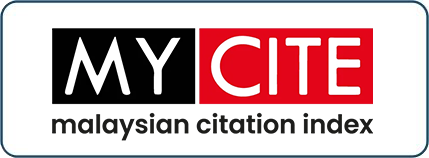Application Of FMEA Method In Halal Risk Determination On Halal Poultry Slaughtering Operations
DOI:
https://doi.org/10.33102/jfatwa.vol29no3.587Keywords:
Halal Slaughtered Chicken,, Failure Mode and Effect Analysis, Halal Risk Point, Risk Priority Number, Halal non-complianceAbstract
The importance of halal slaughtered chicken has become crucial in the era of globalization and complex supply chains. The rising awareness among Muslim communities regarding the integrity of slaughtered chicken products has led to a focus on adhering to halal compliance standards and Islamic law. This study aims to qualitatively analyze the halal risk points in chicken slaughtering operations, by using the Failure Mode and Effect Analysis (FMEA) method, in order to identify potential halal risks and ensure the integrity of halal chicken products. This qualitative study uses a analysis approach by examining secondary sources including journals, articles, guidelines and standards related to halal slaughtering process. In this study, seven Halal Risk Points (HRP) have been identified in the entire halal slaughtering process of broilers. Based on the results of the risk assessment through the FMEA method, each determined HRP will be assessed based on the severity, occurrence and detection rating scale. The final result of this study found that only six HRPs have a Risk Priority Number (RPN) value that exceeds 100. Therefore, corrective action recommendations are proposed to prevent any halal non-compliance from occurring on the process involved. Overall, the FMEA framework in this study is a new approach in guaranteeing the integrity of chicken slaughter products and is able to have a positive impact on the halal chicken slaughter industry players and also the implementers of the halal management system.
Downloads
References
Al-Quran
Abd El-Rahim, I. H. A., Mashat, B. H., & Fat’hi, S. M. (2023). Effect of halal and stunning slaughter methods on meat quality: A review. International Food Research Journal, 30(2), 290–302. https://doi.org/10.47836/ifrj.30.2.02
Abdul Munir Ismail & Nordin Ahmad. (2021). Isu Halal Penguna di Malaysia. Penerbit Universiti Utara Malaysia. UUM Press.
Aleksic, B., Djekic, I., Miocinovic, J., Miloradovic, Z., Memisi, N., & Smigic, N. (2022). The application of Failure Mode Effects Analysis in the long supply chain–A case study of ultra filtrated milk cheese. Food Control, 138. https://doi.org/10.1016/j.foodcont.2022.109057
Ali Rao, R. N. (2020). Ḥalāl Feed for Ḥalāl Food: Sharīᶜah Perspective: Ḥalāl Feed for Ḥalāl
Al-Shammari, K. I. A. (2021). A review of the halal poultry slaughtering from welfare and legal perspectives: Analysis of research results. Studia Iuridica Lublinensia, 30(3), 11–27. https://doi.org/10.17951/sil.2021.30.3.11-27
Chao, E. C. (2022). Islam and Veterinary Science: Rethinking Animal Suffering Through Islamic Animal Ethics and the Evolving Definition of Halal Slaughter. Frontiers in Veterinary Science, 9. https://doi.org/10.3389/fvets.2022.785585
Department of Standards Malaysia [DOSM]. (2009). Malaysian standard: MS1500: 2009 (Halal food: Production, preparation, handling and storage- General requirement) (Second revision). Kuala Lumpur: Standard Malaysia.
Department of Standards Malaysia [DOSM]. (2019a). Malaysian standard: MS1500: 2019 (Halal food: General requirement – Third revision). Kuala Lumpur: Standard Malaysia.
Department of Standards Malaysia. (2019b). Malaysian standard: MS2400-1:2019 (Halal supply chain management system- part 1: Transportation- General Requirement) (First revision). Kuala Lumpur: Standard Malaysia.
Food. Al-Aijaz Research Journal of Islamic Studies & Humanities, 4(1), 182-190. https://doi.org/10.53575/E17.v4.01.182-190
Hakim, L. I., Nur, N. M., Tahir, S. M., & Ibitoye, E. B. (2020). Effect of halal and non-halal slaughtering methods on bacterial contamination of poultry meat. Sains Malaysiana, 49(8), 1947–1950. https://doi.org/10.17576/jsm-2020-4908-16
Hayat, M. N., Kumar, P., & Sazili, A. Q. (2023). Are spiritual, ethical, and eating qualities of poultry meat influenced by current and frequency during electrical water bath stunning? Poultry Science. https://doi.org/10.1016/j.psj.2023.102838
Ishak, I., Mutallib, S. A., & Deauraseh, N. (2018). Isu halal dan potensi makanan yang mengandungi sumber haiwan. Seminar Antara Universiti Pengajian Lepasan Ijazah (SAPLI), 1–9. https://www.researchgate.net/publication/331530356_ISU_HALAL_DAN_POTENSI_MAKANAN_YANG_MENGANDUNGI_SUMBER_HAIWAN
IslamOnline. (2023). Is Islamic Slaughtering Cruel to Animals?. Retrieved on Feb 13, 2024, from https://islamonline.net/en/is-islamic-slaughtering-cruel-to-animals/
Jaafar, N. (2022, September 13). Pusat sembelih ayam jijik diarah ditutup. Sinar Harian. Retrieved on Feb 8, 2024, from https://www.sinarharian.com.my/article/221123/edisi/selangor-kl/pusat-sembelih-ayam-jijik-diarah-ditutup
JAKIM. (2020a). Manual sistem pengurusan halal Malaysia 2020. Jabatan Kemajuan Islam Malaysia. Retrieved from https://smarthalal.com.my/MHMS_2020.pdf
JAKIM. (2020b). Manual prosedur pensijilan halal Malaysia (Domestik) 2020. Jabatan Kemajuan Islam Malaysia. Retrieved from https://smarthalal.com.my/MPPHM_Domestik_2020.pdf
Jalil, H., & Qamar, T. (2019). Developing halal compliance critical points (HCCP) for halal slaughtering system. Journal of Animal and Plant Sciences, 29(6), 1743–1747. https://thejaps.org.pk/docs/Accepted/2019/29-06/36.pdf
Kilci, Z., Cetin, R. U., Ates, K., & Tutak, D. (2023). An innovative application developed to determine the blood output of chickens and its impact on the meat quality in poultry slaughtering. Poultry Science, 102(12). https://doi.org/10.1016/j.psj.2023.103080
Kohilavani, Wan Abdullah, W. N., Yang, T. A., Sifat, S. A. din, & Zzaman, W. (2021). Development of Safe Halal Food Management System (SHFMS). Food Control, 127. https://doi.org/10.1016/j.foodcont.2021.108137
Kohilavani, Yang, T. A., Febrianto, N. A., Nadiah Wan Abdullah, W., & Tajul Aris, A. (2012). A Decision Tree Based Approach for the Identification of Halal Critical Control Point for Slaughtering According to Islamic Dietary Law. Internet Journal of Food Safety, 14, 48–53. https://www.researchgate.net/publication/222101518_A_Decision_Tree_based_Approach_for_the_Identification_of_Halal_critical_Control_Point_for_Slaugtering_According_to_Islamic_Dietary_Law
Kohilavani, Zzaman, W., Abdullah, W. W. N., & Tajul, A. Y. (2015). Embedding Islamic dietary law into an HACCP approach for application to the poultry slaughtering and processing industry. International Food Research Journal, 22(6), 2684–2690. http://www.ifrj.upm.edu.my/22%20(06)%202015/(59).pdf
Md Dahlal, N. (2021). An Ideal Halalan Toyyiban Food Quality Management (HTFQM) Principles. Halalpshere, 1(2), 76–85. https://doi.org/10.31436/hs.v1i2.31
Merriam-Webster (2024). Slaughter. Dalam Merriam-Webster. Retrieved on Feb 13, 2024, from https://www.merriam-webster.com/dictionary/slaughter
Mohamad, M. S., Man, S., & Ramli, M. A. (2015). Keselamatan Makanan Menurut Perspektif Islam: Kajian Terhadap Pengambilan Makanan Berisiko. Jurnal Fiqh, 12(1), 1–28. https://doi.org/10.22452/fiqh.vol12no1.1
Mohd Al’ikhsan Ghazali, Mohd Daud Awang, Siti Salwa Md. Sawari & Nasruddin Yunos (2022). Malaysia Slaughters and Halal Certificate in Malaysia Halal. Jurnal Al- Sirat, 2(1), 60–68.https://ejournal.unipsas.edu.my/index.php/alsirat/article/view/259 https://ejournal.unipsas.edu.my/index.php/alsirat/article/download/259/210
Mohd Ashraf, A., & Abd Rahman, F. (2018). Halalan Toyyiban Poultry Feed: an Appraisal from the Maqasid Shariah Perspective. International Journal of Engineering & Technology, 7(3.21), 306. https://doi.org/10.14419/ijet.v7i3.21.17178
Mohd Hasli Ramli. (2022). Titik Kawalan Kritikal Halal Dalam Sistem Jaminan Halal Di Ladang Penternakan Ayam Pedaging. [Master degree thesis, Universiti Teknologi Malaysia]. Universiti Teknologi Malaysia, Johor.
Mohd Jamilul Anbia Md Denin. (2022, September 24). 'Cincai' proses ayam. Harian Metro. Retrieved on Feb 8, 2024, from https://www.hmetro.com.my/utama/2022/09/885052/cincai-proses-ayam
Muhamed, M. I., & Muhammad Shafiai, M. H. (2021). Sekuriti Makanan Berlandaskan Konsep Halalan Toyyiban: Analisis Dari Perspektif Maqasid Shariah. Jurnal Hadhari, 13(September 2020), 221–243. Retrieved from http://journalarticle.ukm.my/18081/1/52950-174525-1-PB.pdf
Nuchpho, P., Nansaarng, S., & Pongpullponsak, A. (2019). Modified Fuzzy FMEA Application in the Reduction of Defective Poultry Products. Engineering Journal, 23(1), 171–190. https://doi.org/10.4186/ej.2019.23.1.171
Omar, E. N., & Jaafar, H. S. (2011). Halal supply chain in the food industry - A conceptual model. In ISBEIA 2011 - 2011 IEEE Symposium on Business, Engineering and Industrial Applications (pp. 384–389). https://doi.org/10.1109/ISBEIA.2011.6088842
Omar, E. N., Jaafar, H. S., & Osman, M. R. (2012). Assessing halalan-toyyiban food supply chain in the poultry industry. International Halal Conference 2012 (INHAC), 0(2011), 4–5.
Omar, E. N., Jaafar, H. S., & Osman, M. R. (2013). Halalan toyyiban supply chain of the food industry. Journal of Emerging Economies and Islamic Research, 1(3), 1–12. https://myjms.mohe.gov.my/index.php/JEEIR/article/view/9127
Pop, C., Frunză, G., & Ciobanu, M. M. (2019). Study regarding application of the FMEA method within a food safety management system. Scientific Papers-Animal Science Series, 71. http://www.uaiasi.ro/zootehnie/Pdf/Pdf_Vol_71/Cecilia_Pop.pdf
Ramli, M. H., Rosman, A. S., Ajmain @ Jima’ain, M., Md Sikin, A., & Jamaludin, M. (2023). Halal Critical Point Assessment for Chicken Broiler Upstream Operations. International Journal Of Business And Technology Management, 5(4), 107-120. https://myjms.mohe.gov.my/index.php/ijbtm/article/view/24920
Razaly, M. M. R., & Zakaria, Z. (2018). Pelaksanaan Sistem Pengurusan Jaminan Halal Di Rumah-Rumah Sembelihan Ayam Halal Dan Isu-Isu Berkaitan: Satu Sorotan Literatur. Journal Of Shariah Law Research, 3(1), 105–124. https://doi.org/10.22452/jslr.vol3no1.5
Sahid, M. M., & Awang, M. S. (2020). Ḥalālan Ṭayyiban Concept And Maqāṣid Sharī’ah In Animal Slaughtering: A Study On Covid-19 Standard Operating Procedures (SOP) In Malaysia. International Journal of Maqasid Studies & Advanced Islamic Research, 1(2), 55–67.
Saifullah Ahmad. (2023, March 28). Pengguna dakwa ayam di pasar raya tidak disembelih. Sinar Harian. Retrieved on Feb 9, 2024, from https://www.sinarharian.com.my/article/251782/edisi/perak/pengguna-dakwa-ayam-di-pasar-raya-tidak-disembelih
Shahdan, I. A., Regenstein, J. M., Shahabuddin, A. S. M., & Rahman, M. T. (2016). Developing control points for halal slaughtering of poultry. Poultry Science, 95(7), 1680–1692. https://doi.org/10.3382/ps/pew092
Tuan Sidek, T. M. & Ahmad, R. (2018). Penggunaan Pisau Mekanikal dalam Industri Sembelihan Ayam Halal: Analisis Menurut Perspektif Maqasid al-Shariah. Journal of Fatwa Management and Research, 13(1), 54–69. https://doi.org/10.33102/jfatwa.vol13no1.129
Tuan Sidek, T.M., & Ahmad, R. (2023). Penggunaan Teknologi Stunning Dalam Sembelihan Halal Di Malaysia Menurut Perspektif Maqasid Syariah. Halal Issues in Malaysia (Vol.1). Penerbit Universiti Malaysia Pahang Al-Sultan Abdullah (UMPSA).
Wahbah al-Zuhaily. (1999). Fiqh & perundangan Islam. Jilid 3. Dewan Bahasa dan Pustaka. Kuala Lumpur
Wahbah Az-Zuhayli. (1991). Al-Tafsir Al-Munir fi Al-‘Aqidah wa Al-Shari’ah wa Al-Manhaj, Jilid 1&2, Beirut: Dar Al-Fikr. Hal. 73.
Wessiani, N. A., & Yoshio, F. (2018). Failure mode effect analysis and fault tree analysis as a combined methodology in risk management. In IOP Conference Series: Materials Science and Engineering, 337(1). https://doi.org/10.1088/1757-899X/337/1/012033
Yusuf al-Qaradawi. (2000). Alhalal wa al-haram fi al-Islam (Cetakan ke-24). Kaherah: Maktabah Wahbah.
Yusuf al-Qaradhawi. (2019). Halal Haram Dalam Islam. Dalam Zulkifli Mohammad al-Bakri. (Ed.). Pustaka Cahaya Kasturi Sdn Bhd.
Zainudin, F. (2014, March 5). Status halal 1.3 juta ayam sembelihan diragui. Berita Harian, 2. Retrieved on Feb 9, 2024, from https://www.selangor.gov.my/index.php/file_manager/dl_item/53325679595852686269424261326869595849764d6a41784e43394e59574d674d6a41784e43394c5a584a68644746755830467261474a68636c383158303168593138794d4445304c564a68596e55756347526d
Zuhainy Zulkiffli. (2023, May 3). Guna logo halal palsu, rumah sembelihan ayam diarah tutup 14 hari. BH Online. Retrieved on Feb 8, 2024, from https://www.bharian.com.my/berita/kes/2023/05/1096686/guna-logo-halal-palsu-rumah-sembelihan-ayam-diarah-tutup-14-hari
Zulkifli, I., Wakiman, Z., Sazili, A. Q., Goh, Y. M., Jalila, A., Zunita, Z., & Awad, E. A. (2019). Effect of shackling, electrical stunning and halal slaughtering method on stress-linked hormones in broilers. South African Journal of Animal Science, 49(3), 598–603. https://doi.org/10.4314/sajas.v49i3.20
Downloads
Published
Issue
Section
License
Copyright (c) 2024 Mohd Hasli Ramli, Arieff Salleh Rosman, Mohammad Aizat Jamaludin

This work is licensed under a Creative Commons Attribution 4.0 International License.
The copyright of this article will be vested to author(s) and granted the journal right of first publication with the work simultaneously licensed under the Creative Commons Attribution 4.0 International (CC BY 4.0) license, unless otherwise stated.















